全站搜索
Search the entire website
Search the entire website
Rotary kilns are commonly used in lime plants, cement plants, steel plants, and metallurgical plants. The applicable materials include limestone, bauxite, dolomite, lithium ore, ceramsite, clay, gypsum, chrome ore, nickel iron ore, zinc oxide, ore slime, etc.
High temperature processing is very important in many industries. It changes raw materials into valuable products. This change needs a lot of heat. The heat causes chemical reactions. It can also change the material’s physical structure. A Rotary Kiln is a core machine for this kind of work. It is a large, rotating cylinder. Material goes in one end. Heat is applied inside. The material moves slowly through the hot zone as the kiln turns. It comes out the other end changed. This turning action helps the material heat evenly. It helps the chemical reactions happen correctly.
This equipment is essential for many tasks. It is used for calcining. Calcining removes water or carbon dioxide from materials using heat. It is used for drying materials at high temperatures. It is used for sintering. Sintering heats materials to make particles stick together without fully melting. These processes are vital for making many products we use every day. Without a Rotary Kiln or similar equipment, many modern industries could not exist. It provides a reliable way to apply high heat to large amounts of material continuously. It is built to handle very high temperatures, often over 1000 degrees Celsius (1800 degrees Fahrenheit). It handles large volumes of material hour after hour, day after day. This makes it a workhorse in places that need continuous high heat.
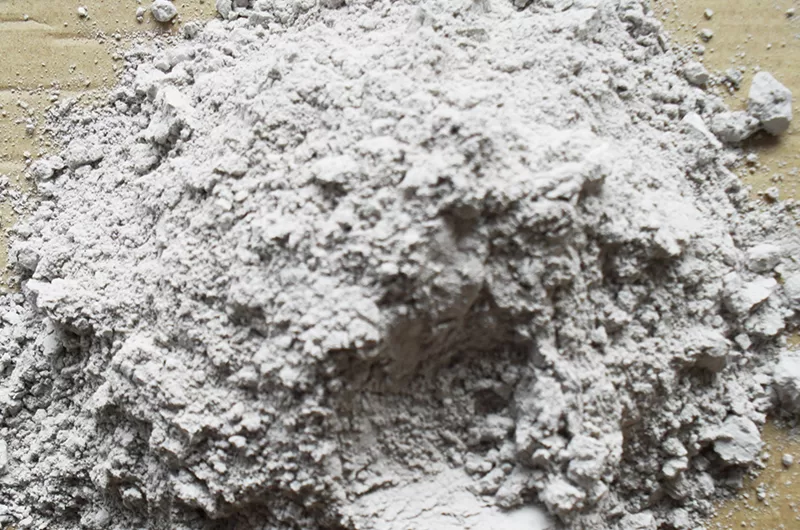
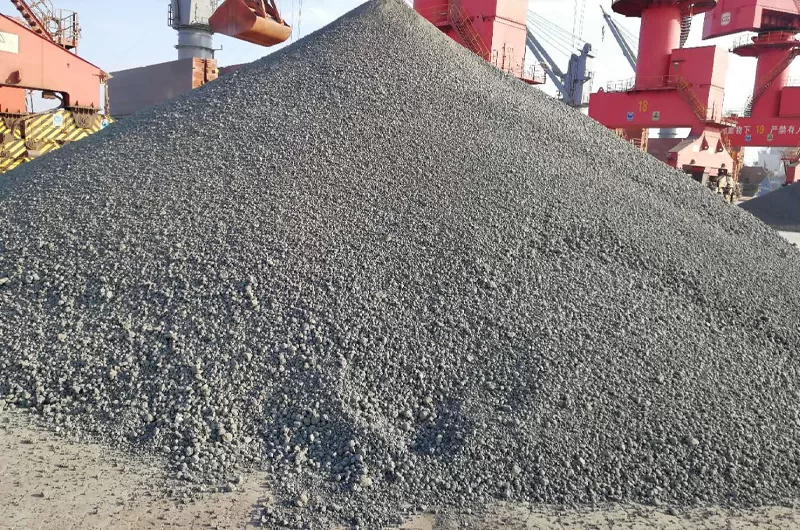
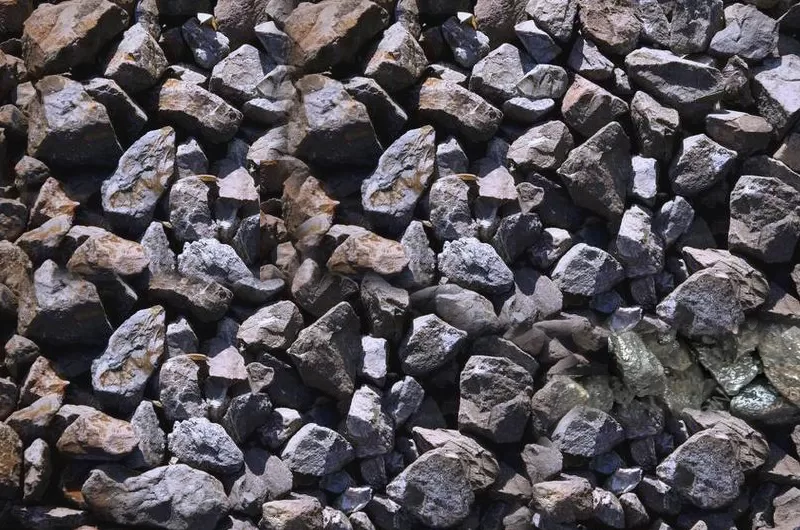
When people say “Rotary Kiln“, they often think of the long, straight tube used for cement. But there are different types of rotary kilns. They are designed for different materials and different jobs. The main idea is the same: a turning cylinder. But the details change a lot. These differences matter for how the kiln works and what it is best for.
The most common type is the Single Shell Rotary Kiln. It is a long, straight steel tube lined with refractory material (like special bricks) to handle the heat. Material goes in one end and moves to the other. Heat is applied, usually by burning fuel at the discharge end. This is the type widely used for cement and lime. Its design is simple and robust. It works well for materials that flow easily and need long heating times. But it can lose a lot of heat through the large surface area.
There are also Multi-Tube Rotary Kilns. These kilns have several smaller tubes inside the main shell. Material moves through these inner tubes. The hot gases flow around the outside of these tubes within the main shell. This design is often used for drying or calcining finer materials. It can be more thermally efficient than a single tube for some applications because it increases the contact area for heat transfer. However, they can be more complex to maintain.
Another type is the Vertical Kiln or Shaft Kiln. While not a “rotary” kiln in the same sense, it is used for similar high-temperature processes like making lime. Material moves down a vertical shaft by gravity. Hot gases move up. These are different from rotary kilns in how material moves and how heat is transferred. They are often more energy efficient for certain materials but may not handle a wide range of particle sizes as well as rotary kilns. Understanding these types helps you see why one kind might be better for your material than another.

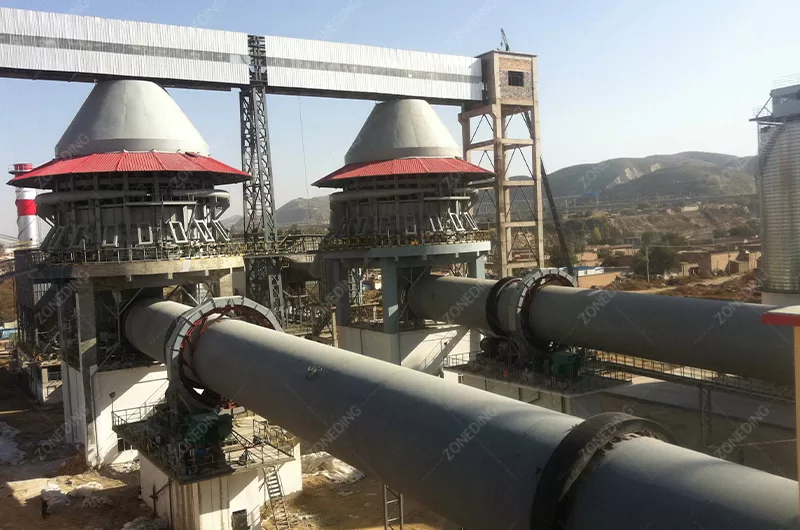
Yes, your specific material needs a specific type and design of Rotary Kiln. You cannot just use any kiln for any material and expect good results. Materials have different properties. They need different temperatures. They need to be heated for different amounts of time. They react differently in the heat. These things affect the kiln’s size, shape, materials, and how it works.
For example, making cement clinker needs very high temperatures, around 1450 degrees Celsius (2640 F). The raw mix also goes through different stages of heating and chemical change as it moves along the kiln. This requires a very long kiln with different temperature zones. The material is also abrasive and can cause wear. Making lime needs lower temperatures, around 900-1000 degrees Celsius (1650-1800 F). The process is simpler. The material is different. So, a lime kiln might be shorter and have a different internal design than a cement kiln. Processing mineral ores might require different atmospheres inside the kiln (like reducing instead of oxidizing) or specific temperature profiles to extract the metal effectively. Some ores might be sticky at high temperatures.
We need to look closely at your material. What is it made of? What size are the particles? How much water is in it when it enters the kiln? What temperature does it need to reach? How long does it need to stay at that temperature? Does it become sticky? Does it create dust? Does it react in ways that create problems like ring formation? Based on these facts, we design the kiln. We decide the length and diameter of the shell. We choose the type and thickness of the refractory lining. We design the internal parts like lifters or dams. We select the right firing system (what fuel to use and how to burn it). We also consider the feed system (Vibration Feeder or other types) and the discharge system, and the cooling system after the kiln (like a Rotary Cooler). A customized kiln ensures the material is heated correctly. It ensures the kiln lasts a long time and runs efficiently.
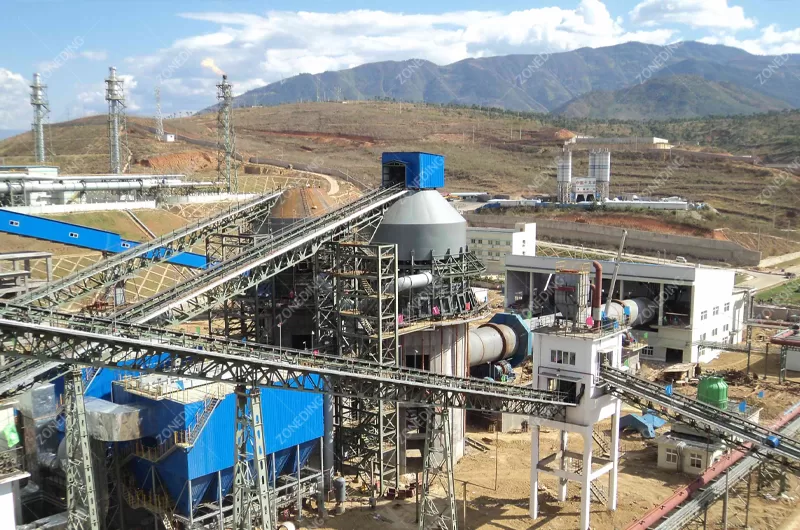
Running a Rotary Kiln uses a lot of energy. You need fuel to create the high heat. You need electricity for the motors that turn the kiln and run the fans and pumps. Energy is a big part of the cost of running a kiln. But there are ways to make your kiln use less energy. It is not just normal to have high bills. Good design and smart operation can save a lot of money on energy.
One main way to save energy is to improve thermal efficiency. This means getting more heat into the material and less heat wasted. The refractory lining is very important here. A good lining keeps heat inside the kiln shell. It prevents heat loss to the outside air. Choosing the right refractory material and installing it correctly is vital. Regularly checking and repairing the refractory helps keep the heat inside. Another big area for saving energy is using waste heat. The hot gases leaving the kiln still contain a lot of heat. This heat can be captured. It can be used to preheat the raw material before it enters the kiln. This reduces the amount of new fuel needed to heat the material. Preheaters like suspension preheaters or grate preheaters are common ways to do this, especially in cement plants. The hot gas can also be used for drying the raw material or other purposes in the plant.
Optimized design helps too. The length and diameter of the kiln affect how long the material stays inside. The speed the kiln turns affects this too. The angle of the kiln also matters. These factors influence how well heat transfers from the hot gases to the material. The firing system design also impacts efficiency. Burning the fuel completely and efficiently creates more useful heat. Using variable speed drives on motors can also save electricity. They let you adjust the motor speed precisely based on need, using less power than running at full speed all the time. Advanced control systems can also help. They monitor temperatures and flow rates. They adjust fuel, air, and material feed to keep the process running at peak efficiency. All these small improvements add up to significant energy savings over time.
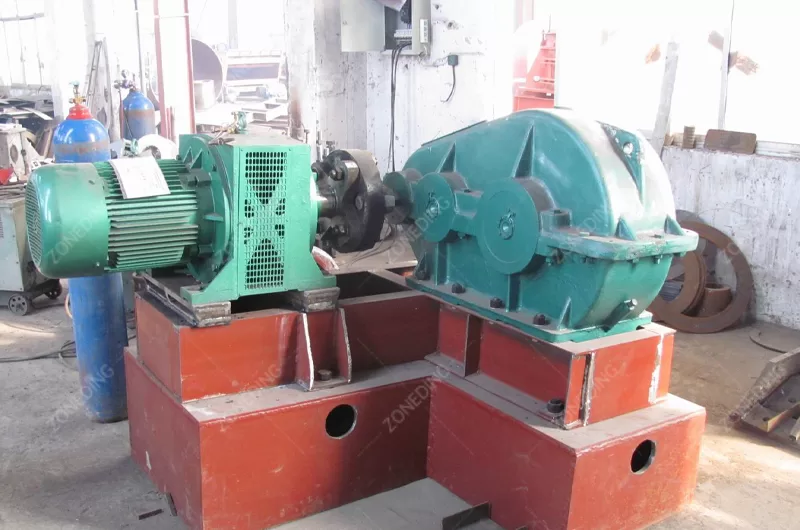
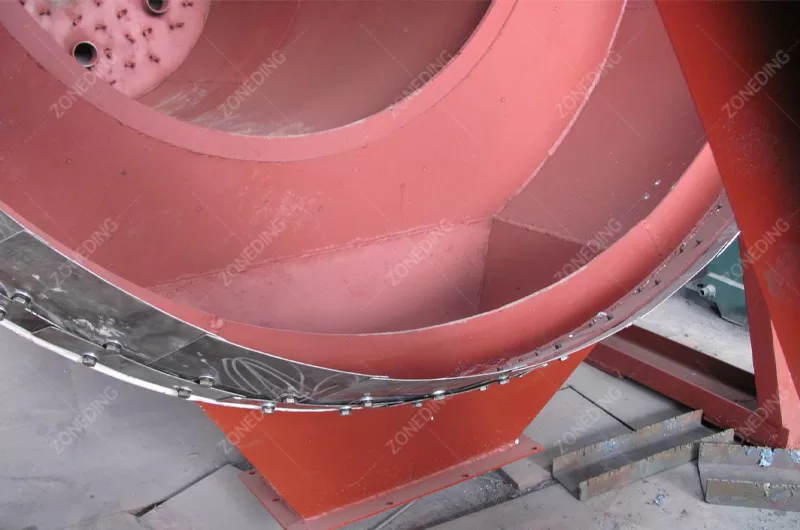
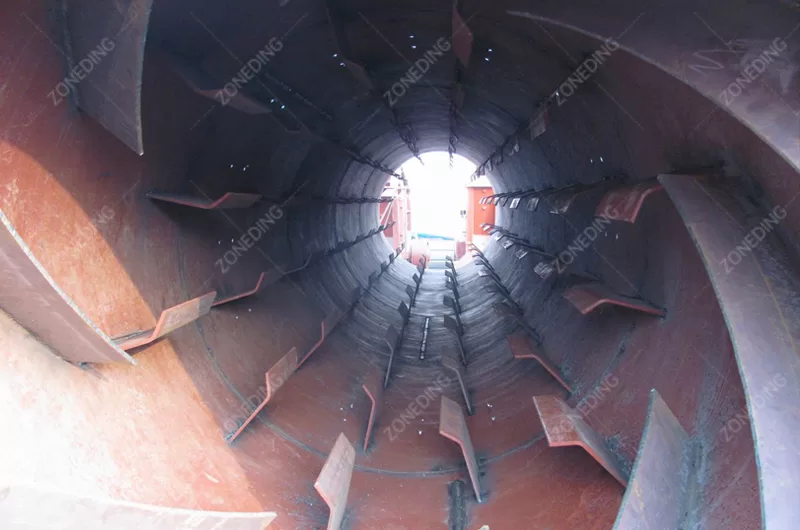
Running a Rotary Kiln is not always easy. These machines work in very harsh conditions. High temperatures, heavy loads, and abrasive materials can cause problems. Two common problems are refractory lining damage and ring formation. Refractory is the heat-resistant material lining the inside of the kiln. It protects the steel shell from the heat. Ring formation happens when material sticks to the inside wall and builds up, forming a ring that blocks material flow.
Refractory damage is a big issue. Refractory bricks or castable material can wear away from the moving material. They can crack or break due to high heat, temperature changes, or chemical attack from the material being processed. If the refractory fails, the hot gas touches the steel shell. This can cause the shell to overheat and deform. It can even cause a hole. When you see hot spots on the outside of the kiln shell (areas that are much hotter than normal), it often means the refractory behind that spot is damaged. You must stop the kiln and fix the refractory quickly. To prevent damage, use the right type of refractory for your material and temperatures. Install it correctly. Avoid sudden temperature changes. Regularly inspect the lining when the kiln is stopped. Repair small damaged areas before they become large problems.
Ring formation is also a common headache. Sticky material or dust can build up on the inside wall, usually in hotter zones where materials start to melt or react. These rings narrow the kiln. They slow down or stop material flow. This reduces production. If a ring gets too big, it can even damage the kiln. Fixing rings often means using special tools to break them up while the kiln is running (if safe and possible) or stopping the kiln to remove them mechanically. Preventing ring formation involves understanding why your material forms rings. Adjusting the raw material mix, the temperature profile in the kiln, or the amount of fuel/air can sometimes help. Some kiln designs have features to help prevent ring formation. Regular checks inside the kiln (using cameras or during stops) help catch rings early.
You want your Rotary Kiln to produce a lot of product. You also want that product to be high quality. The kiln’s performance depends on how you run it and how it was designed. Getting both high output and good quality requires careful control of the process inside the long tube.
One key factor is the material feed rate. How much material goes into the kiln per hour? If you feed too little, you waste energy heating mostly air. If you feed too much, the material does not stay in the hot zone long enough. It does not get heated properly. It might not complete the needed reactions. So, you need a steady, controlled feed rate that matches the kiln’s capacity and the desired heating time. A good Vibration Feeder helps provide a steady material flow.
Temperature control is also vital. The temperature inside the kiln must follow a specific profile along its length. Different temperatures are needed for drying, preheating, calcining, and sintering zones. Burning too hot can damage the kiln or overheat the product. Not hot enough means the material does not change correctly. This results in poor product quality. You need good temperature sensors inside the kiln. You also need a control system that adjusts the fuel and air supply to maintain the correct temperatures.
The speed of the kiln rotation affects how fast the material moves through. It affects how the material tumbles and mixes inside. This tumbling is important for even heating and good contact with the hot gases. The slope of the kiln also affects how fast material moves. Adjusting speed and slope helps control the time the material spends in the hot zone. This is called retention time. The right retention time is needed for the material to reach the target temperature and finish its chemical changes. Optimizing these factors together helps you get the most output of high-quality product from your kiln. Grinding the clinker after the kiln into cement usually needs a Ball Mill. A good kiln output helps the mill work better.
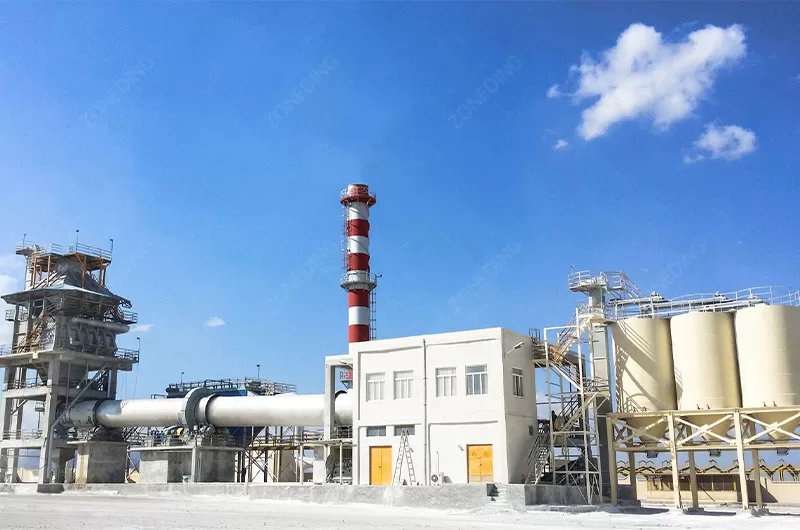
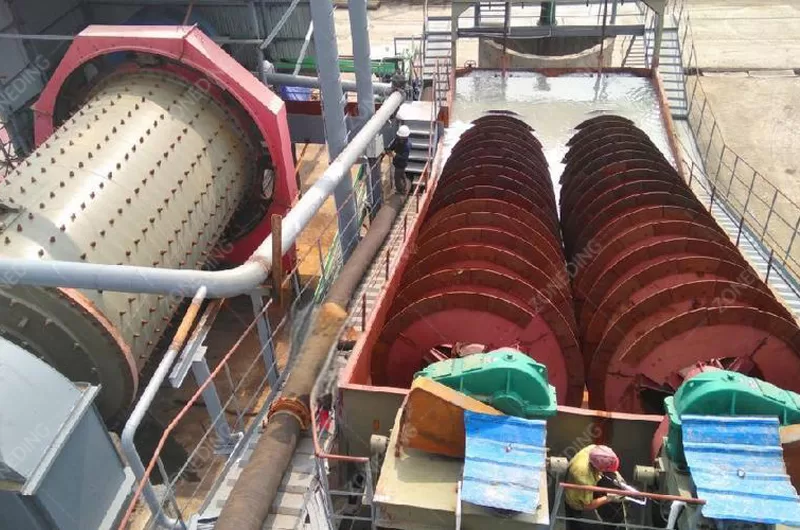
Today, environmental rules are very strict. Rotary Kilns can produce exhaust gases and dust. These emissions must be cleaned before they go into the air. Companies need to control these emissions to meet government standards. This is important for public health and for getting and keeping permits to operate.
The main emissions from a kiln are exhaust gas and dust particles. The exhaust gas is hot air from burning fuel. It can contain gases like sulfur dioxide (SO2) and nitrogen oxides (NOx). It also contains carbon dioxide (CO2), but controlling CO2 is a bigger challenge often addressed at the fuel source or with capture technology. Dust particles are fine solids carried out by the hot gas flow. These come from the raw material or the fuel ash. Controlling dust is usually done with filters. Bag filters (like large fabric bags that catch dust) or Electrostatic Precipitators (ESPs, which use electric charge to collect dust) are commonly used. These systems capture most of the dust particles. The clean gas then goes out through the stack.
Controlling gases like SO2 and NOx is more complex. SO2 comes from sulfur in the fuel or raw material. NOx gases form at very high temperatures when nitrogen and oxygen in the air combine. Different methods are used depending on the specific gas and its amount. For SO2, systems might inject materials that react with sulfur and remove it from the gas. For NOx, methods include adjusting the burning process (like using special burners or changing the air supply) to create less NOx, or using systems after the kiln to remove NOx from the exhaust gas (like selective catalytic reduction or selective non-catalytic reduction).
Handling these emissions requires investing in pollution control equipment. This is a necessary part of setting up and running a Rotary Kiln today. The type and size of pollution control equipment depend on the kiln’s size, the materials it processes, the fuel it uses, and the local environmental rules. Working with a supplier who understands these requirements is important. They can help you choose and install the right systems to ensure your kiln meets all environmental standards.
Buying a Rotary Kiln is a major investment. The initial cost of the machine itself is high. But it is not the only cost you need to think about. There are other expenses involved in getting a kiln working and running it over time. These other costs are sometimes called “hidden costs”, but they are important parts of the total investment and operating expense.
The price of the kiln machine depends a lot on its size, the materials used to build it (like special steel or refractory), the design complexity, and the level of automation. A large cement kiln costs much more than a smaller kiln for specialty minerals. But besides the machine price, you need to pay for transportation to your site. You need to pay for installation. Installing a large kiln is a big construction project. It requires heavy lifting equipment and skilled workers. The cost of building the foundation, piers, and supports for the kiln is also part of the initial investment. You also need to buy all the supporting equipment. This includes the firing system, the feed system (Vibration Feeder), the discharge system, the cooling system (Rotary Cooler), the exhaust gas cleaning system, and the electrical and control systems. All these add to the initial cost.
Once the kiln is running, there are ongoing operating costs. Energy (fuel and electricity) is usually the biggest operating cost. Labor costs for operating and maintaining the kiln are also significant. Maintenance costs are important. The refractory lining needs regular repair and replacement. Mechanical parts like rollers, bearings, and gears also wear out and need maintenance. You need to keep spare parts on hand. The cost of raw materials is also a factor in the overall expense of production. Environmental costs, like paying for emission monitoring or waste disposal (for dust captured in filters), are also ongoing. When you plan to buy a kiln, you should consider all these costs – initial investment, installation, support equipment, and ongoing operating and maintenance costs – to understand the total cost of ownership over the life of the kiln.
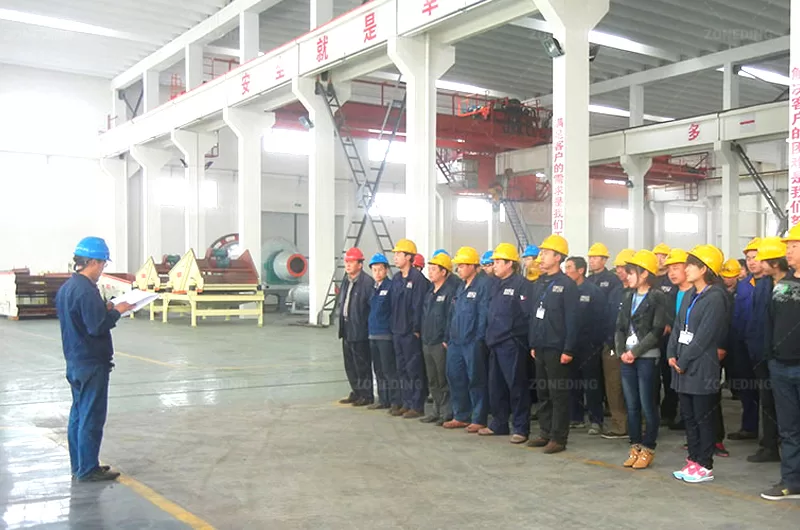
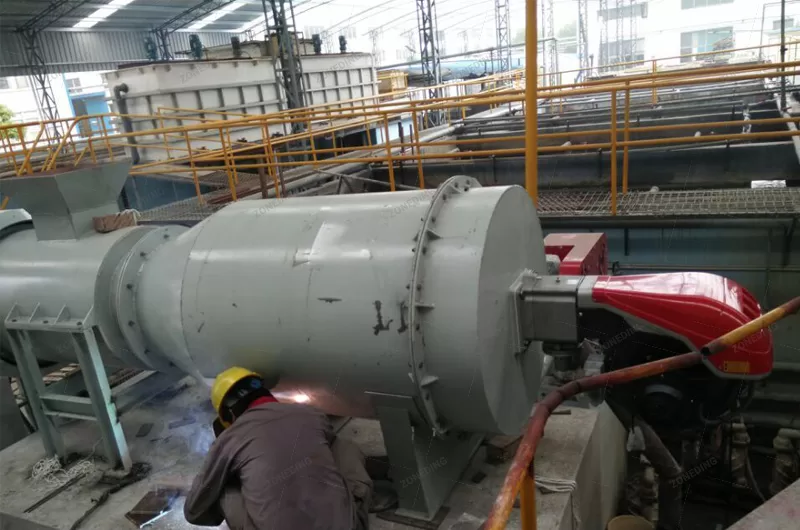

Choosing the right supplier for a Rotary Kiln is a very important decision. This is a complex and expensive machine. You need a partner you can trust for a long time. Looking only at the price is a mistake. A cheap kiln that does not work right or breaks down often will cost you much more in lost production and repair bills. You need to look at other things besides the cost.
Experience matters a lot. Has the supplier designed and built rotary kilns for your specific material before? Do they understand the high-temperature process? A supplier with deep experience knows the challenges. They know how to design a kiln that will work reliably for your application. We at ZONEDING MACHINE have been making mineral processing equipment since 2004. We have built kilns and related equipment for various industries. We have learned a lot about different materials and processes.
Technical capability is also key. Does the supplier have a strong engineering team? Can they customize the design of the kiln to match your material properties and production needs? Can they help you integrate the kiln with other equipment in your plant, like Crushing Equipment or Grinding Equipment? Do they use modern design tools and manufacturing processes? Visit their factory if you can. See their quality control. Look at the materials they use. Ask about their testing procedures.
After-sales service is vital for a complex machine like a kiln. What kind of support do they offer after you buy the machine? Will they help with installation and commissioning? Do they provide training for your operators and maintenance staff? What is their policy for spare parts? How quickly can they provide technical support if you have a problem? A good supplier will offer comprehensive support. They will be there to help you optimize the kiln’s performance and solve problems quickly over its long life. This ongoing support can save you a lot of headaches and money.
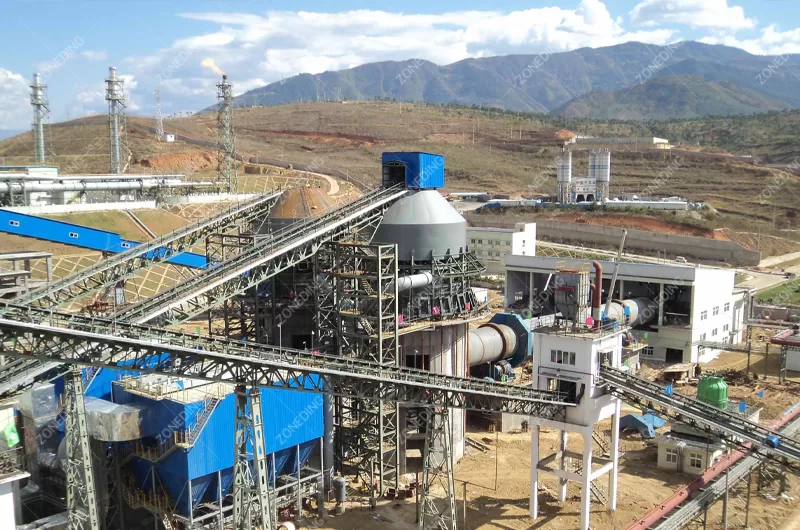
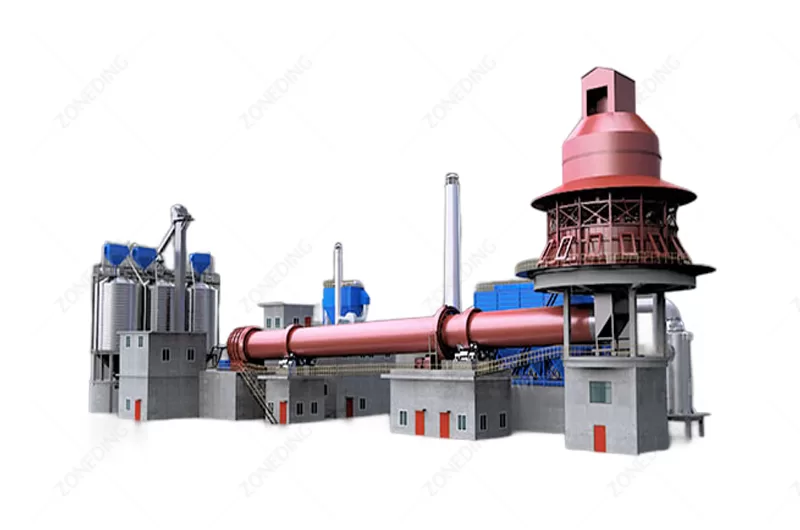

Calcining is a high-temperature process in a Rotary Kiln where materials are heated to remove water or carbon dioxide, changing their chemical makeup. For example, heating limestone (calcium carbonate) to make lime (calcium oxide).
A well-designed and properly maintained Rotary Kiln can last for many decades, often 30 years or more. The steel shell is very durable. Internal parts like refractory and mechanical components need regular maintenance and replacement.
Yes, Rotary Kilns can handle wet material. They often have a drying zone at the feed end where water is removed using hot exhaust gases. However, very wet materials might need separate drying before entering the kiln for best efficiency.
Rotary Kilns can use various fuels. Common fuels include coal, natural gas, fuel oil, and petroleum coke. Some kilns can also use alternative fuels like shredded tires, waste plastics, or biomass. The choice depends on availability, cost, and environmental rules.
